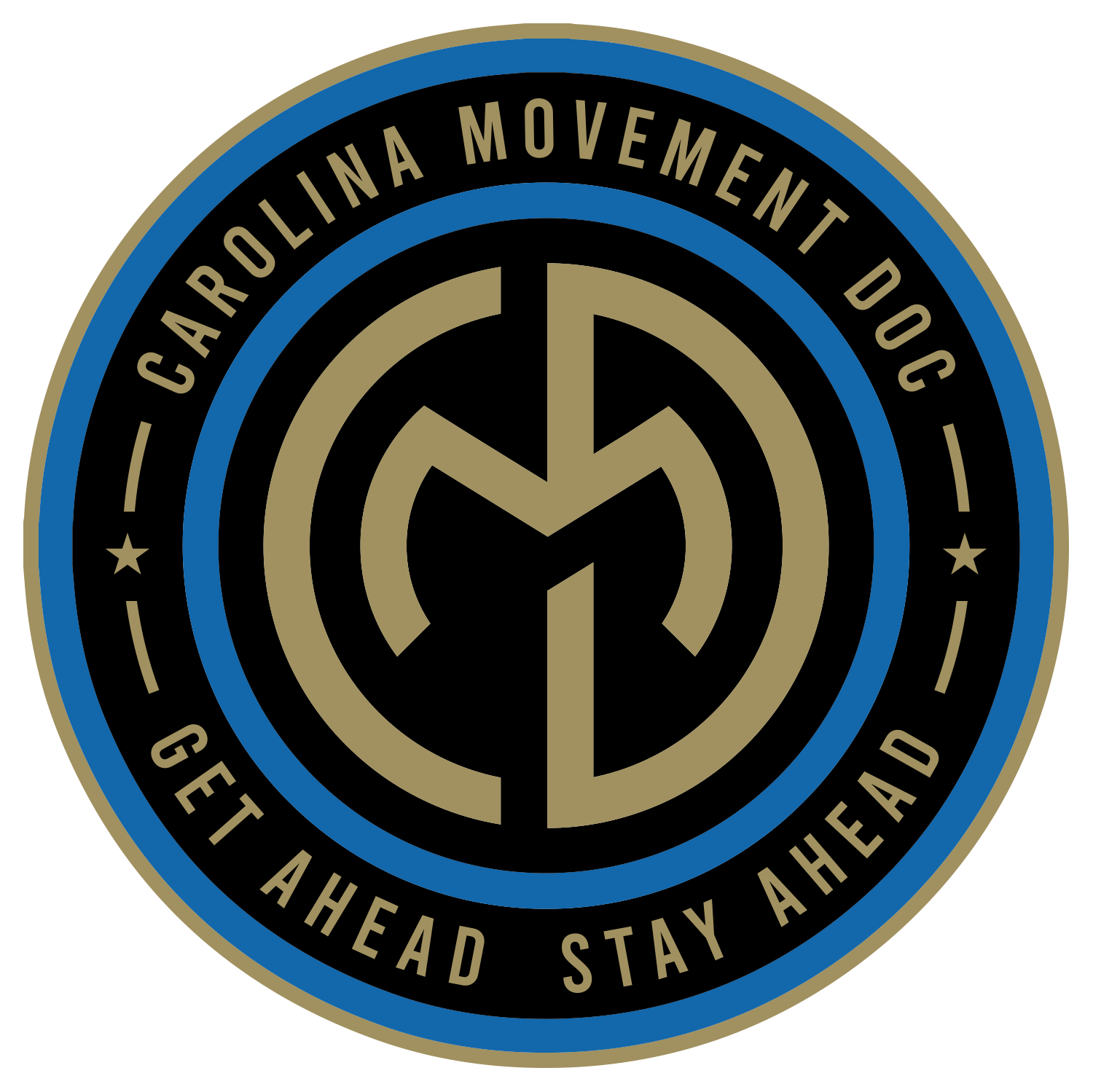Shutting it Down: When Movement is NOT the best medicine
We’ve all heard the phrases: “Movement is Medicine” and “Motion is Lotion.” And it’s true—staying active is one of the best ways to keep your body healthy, mobile, and pain-free. We live and breathe this particular mantra here at Carolina Movement Doc. But what about those times when movement isn’t the answer? WHAAAAATTT? Doesn’t that go against everything we are about? Not necessarily. Let’s be smart about this. While staying active is essential, there are moments when full rest is not only necessary but crucial for recovery. So, how do you know when to push through and when to hit pause? Let’s break it down.
When Movement is NOT the Best Medicine
1. Acute Injuries – When You Need to Let Healing Happen
If you’ve just suffered a significant injury—like a severe sprain, muscle tear, or fracture—your body needs time to initiate the healing process. Jumping back into activity too soon can worsen tissue damage and prolong recovery.
🔹 Signs You Should Shut It Down:
Sharp, stabbing pain that worsens with movement. This sounds like a no-brainer but this does get lost on some people.
Swelling that doesn’t subside with ice and elevation and low level movement
A visible deformity or inability to bear weight. This is an emergency and should warrant a consult from a professional.
✅ What to Do: Consult a medical professional IMMEDIATELY. You can’t “doctor” yourself so you will need the advice of an expert. So don’t be stupid and ask for help (and not a blind question on facebook either…)
2. Post-Surgical Recovery – Healing Takes Time
Surgery is a major trauma to the body, and while early movement is often encouraged, there are strict protocols that must be followed. Whether it’s a knee replacement, rotator cuff repair, or spinal surgery, jumping the gun on exercise can lead to complications.
🔹 Signs You Should Shut It Down:
Doctor or PT explicitly tells you to rest. WE understand you want to get back at it, but your body needs to use that energy for your healing process.
Intense pain beyond typical post-op soreness. This i the 9 or 10 out of 10 pain level…even with pain meds.
Increased swelling, redness, or signs of infection. Again, this is an emergency and you should see a professional.
✅ What to Do: Stick to your physical therapist’s guidelines and ease back into movement under professional supervision. We got you!
3. Severe Overuse Injuries – When the Body is Begging for a Break
Overuse injuries—like stress fractures, severe tendonitis, and debilitating chronic joint pain—don’t just appear overnight. They build up over time due to too much repetitive stress without adequate recovery.
🔹 Signs You Should Shut It Down:
Pain that lingers even after warm-ups and cooldowns
Aches that persist at rest or overnight
Decreased performance and persistent fatigue
✅ What to Do: Take a few days to a week off, focus on low-impact movements, and constantly communicate with your PT to modify your routine so you aren’t a complete slug.
4. Severe Illness or Systemic Fatigue – When Your Body Says ‘Nope’
Feeling under the weather? If you have a mild cold, light movement can sometimes help. But if you’re dealing with the flu, COVID-19, or severe fatigue, rest is non-negotiable.
🔹 Signs You Should Shut It Down:
Fever over 100.4°F (38°C)
Severe body aches, chills, or respiratory distress
Dizziness, extreme exhaustion, or dehydration
✅ What to Do: Prioritize hydration, nutrition, and sleep. Pushing through a serious illness can prolong recovery and even lead to complications like myocarditis (heart inflammation).
5. Mental Burnout – When Your Mind Needs Rest Too
This is the huge one that nobody talks about and everybody forgets. Physical fatigue is easy to recognize, but mental and emotional burnout are just as important to address. A smart athlete with be vocal about this, but most of us are simply NOT smart athletes. Chronic stress, lack of motivation, and emotional exhaustion can manifest as physical symptoms.
🔹 Signs You Should Shut It Down:
Feeling unmotivated or dreading workouts
Increased anxiety or irritability
Persistent fatigue despite adequate sleep
✅ What to Do: Take a mental reset—try mindfulness, yoga, or simply take a few days off to recharge.
How to Know When It’s Time to Move Again
Complete rest is sometimes necessary, but it shouldn’t last forever. Here’s how to gauge when you’re ready to return:
Pain-Free Movement: If you can move without sharp pain, you’re likely ready to ease back in.
No Swelling or Inflammation: Persistent swelling is a sign that the injury hasn’t fully healed.
Energy Levels Back to Normal: If you feel refreshed and strong, your body is ready.
Final Thoughts: Rest Smart, Recover Faster
The key takeaway? Movement is medicine—but so is rest. I know this isn’t what we preach most of the time here, but we are also all for being a smart athlete. Knowing when to shut it down and when to keep moving is the difference between prolonged pain and smart, efficient recovery. Listen to your body, work with a physical therapist and come back stronger than before.
Need guidance on when to move and when to rest? Contact us today for expert physical therapy advice!
